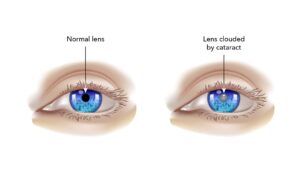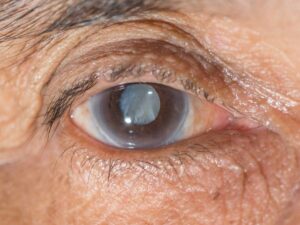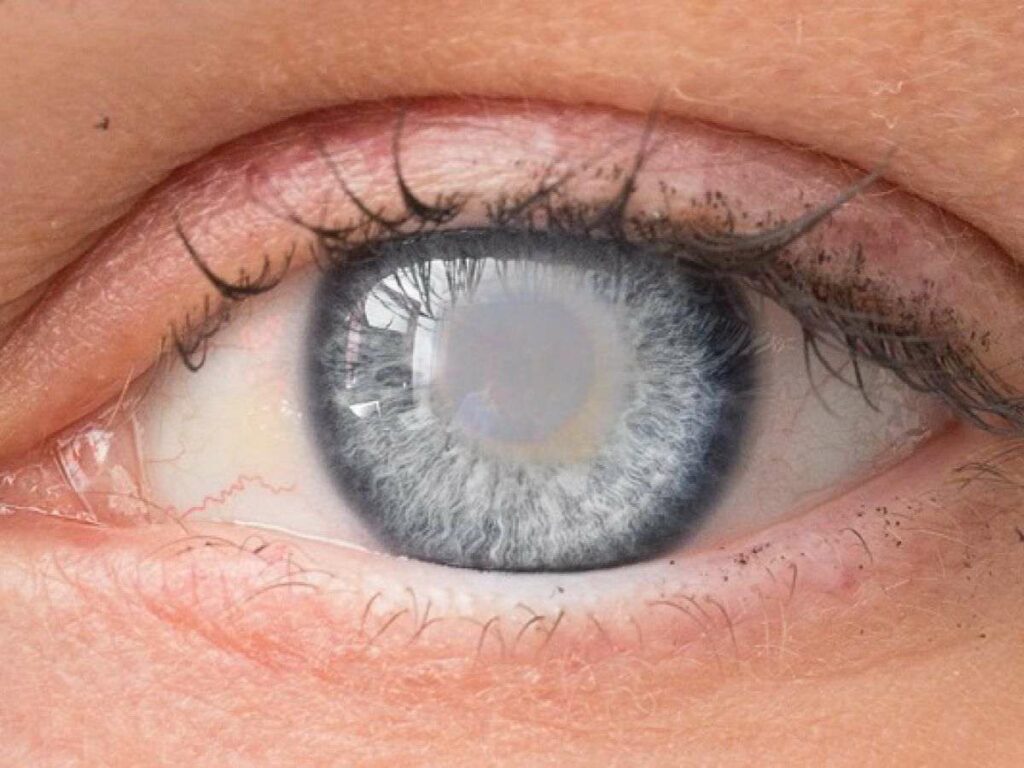If you have been experiencing vision problems, you may be wondering if you have a cuneiform cataract. This is a type of cataract that affects the cuneiform region of the lens. In this blog post, we will discuss what cuneiform cataracts are, how they are treated, and some of the risks associated with them. We will also provide tips for preventing cuneiform cataracts from developing in the first place.
Contents
What Is Cupuliform Cataract?
 The cupuliform cataract is also known as a posterior subcapsular cataract, which is a growth of the lens inside the eye. It develops slowly and can cause vision loss over time if left untreated. This type of cataract usually affects people over 50 years old, although it can occur in younger individuals as well.
The cupuliform cataract is also known as a posterior subcapsular cataract, which is a growth of the lens inside the eye. It develops slowly and can cause vision loss over time if left untreated. This type of cataract usually affects people over 50 years old, although it can occur in younger individuals as well.
The posterior subcapsular cataract, or cupuliform, is located in front of the posterior capsule and is caused by the epithelial cells’ migration to the back. Meanwhile, cortical cataracts usually occur as radial or spoke-shaped water clefts (cuneiform) along with vacuoles. These cuneiform changes can be found in both anterior and posterior areas.
It is important to note that cupuliform cataracts are not the same as nuclear cataracts, which form in the nucleus of the lens. If you are diagnosed with a cupuliform cataract, your doctor will recommend treatment based on the severity and degree of visual impairment.
What Are The Symptoms?
There are several signs and symptoms associated with cuneiform cataracts. These include:
- Changes in vision: It is very common for people with cuneiform cataracts to experience blurred vision, double vision, and decreased visual acuity.
- The appearance of floaters: Floaters are spots or clouds that can appear in your field of vision and tend to move around.
- Light sensitivity: People with cuneiform cataracts may be more sensitive to bright lights than normal. It is important to wear sunglasses when outdoors and dim your lights when indoors.
- Halos: Halos are glowing circles that appear around bright objects like headlights or street lamps.
- Difficulty with night vision: This symptom may be due to the halos and light sensitivity described above.
- Discomfort and irritation: Finally, you may experience discomfort, itching, or burning in your eyes.
Moreover, cuneiform cataracts can also cause double vision, nearsightedness, and astigmatism. If you are having any signs of these symptoms, you should see an eye specialist as soon as possible.
What Causes Cuneiform Cataracts?
Cuneiform cataracts are caused by a number of factors. These include:
- Aging: As we age, the lenses of our eyes become more rigid. This can cause them to become clouded and misshapen, resulting in a cuneiform cataract.
- Genetics: Some people are born with an underlying eye condition that can lead to cuneiform cataracts over time.
- Injury: Injury or trauma to the eyes can cause damage to the lens, leading to a cuneiform cataract.
- Disease: In rare cases, an underlying medical condition can cause the lens to become misshapen or cloudy.
- Medication: Some medications are known to increase the risk of developing a cuneiform cataract.
These are generally common causes and risk factors associated with cuneiform cataracts, however, it is important to note that the exact cause can vary from person to person. For more information, it is important to consult with an ophthalmologist or optometrist.
How Is It Diagnosed?
Cuneiform cataracts are typically diagnosed with a comprehensive eye exam. During the exam, your doctor will check your vision and look for any signs of a cataract. To get an even more accurate diagnosis, doctors may utilize imaging tests such as ultrasound or x-ray.
An accurate diagnosis is essential to determine the best course of action for treating cuneiform cataracts. The treatment options depend on the type and severity of your cataract, as well as any other health issues you may have.
How Is Cuneiform Treated?
 It is important to note that cuneiform cataracts cannot be cured, but their effects can be managed with surgery. The exact type of surgery will depend on the severity and extent of the cuneiform cataract in the eye. In some cases, partial removal of the opaque lens may be enough to correct vision.
It is important to note that cuneiform cataracts cannot be cured, but their effects can be managed with surgery. The exact type of surgery will depend on the severity and extent of the cuneiform cataract in the eye. In some cases, partial removal of the opaque lens may be enough to correct vision.
In other cases, a more extensive procedure may be required to remove the entire lens and replace it with an artificial intraocular lens (IOL). As with any surgery, there are risks associated with this procedure. These include infection, retinal detachment, glaucoma, and bleeding in the eye.
In addition, there are lifestyle changes that may be recommended to reduce the risk of cuneiform cataracts. These include avoiding smoking and exposure to ultraviolet (UV) radiation, using sunglasses when outdoors, and wearing protective eyeglasses while engaging in activities that involve flying objects or sharp objects.
Finally, regular eye exams can help to detect the early stages of cuneiform cataracts, allowing for earlier treatment and improved vision. Early diagnosis and treatment of cuneiform cataracts can help to prevent the progression of this condition and preserve vision.
Can It Be Prevented?
Many people are unaware of the risks associated with cuneiform cataracts. Fortunately, there are some steps you can take to lower your risk of developing this condition. These include:
- Eating a diet rich in fruits and vegetables: Eating plenty of colorful fruits and vegetables can help reduce your risk of developing cuneiform cataracts. Additionally, some studies suggest that certain antioxidants found in these foods may help protect against them.
- Wearing sunglasses when outdoors: Ultraviolet (UV) rays from the sun can damage the eyes and increase your risk of developing cuneiform cataracts. Wearing sunglasses that offer 100% UV protection can help protect your eyes from this damage.
- Not smoking: Smoking is a known risk factor for many eye diseases, including cuneiform cataracts. Quitting smoking can reduce your risk of developing these and other eye conditions.
- Limiting your alcohol consumption: Drinking too much alcohol is linked to an increased risk of developing cuneiform cataracts. Limiting your intake or avoiding alcohol altogether can help reduce this risk.
- Regular check-ups with an ophthalmologist: Seeing an ophthalmologist regularly can help to identify any issues with your eyes early on. This can help prevent or slow down the progression of cuneiform cataracts.
These are just a few ways to lower your risk of developing cuneiform cataracts. Remember, if you have any concerns about your vision, be sure to speak with an eye doctor for more information. While cuneiform cataracts can’t be prevented, taking these steps may help reduce your risk and protect your vision.
Conclusion
In conclusion, cuneiform cataracts can be a serious, sight-threatening condition that can lead to vision loss if left untreated. Thankfully, there are treatments available to manage the symptoms of this cataract type and preserve vision. Early diagnosis and treatment are key in preventing complications with this condition.
So do not forget to have regular eye exams to ensure that any potential vision problems are caught early and do not get worse. With the right diagnosis, treatment, and preventative measures, you can protect your eyesight and maintain clear vision for many years to come!
Cataract surgery is a safe and painless procedure. At MantraCare we have a team of experienced eye surgeons, who will be happy to answer any questions on cataract surgery. Call us at +91-9711116605 for any inquiries.
